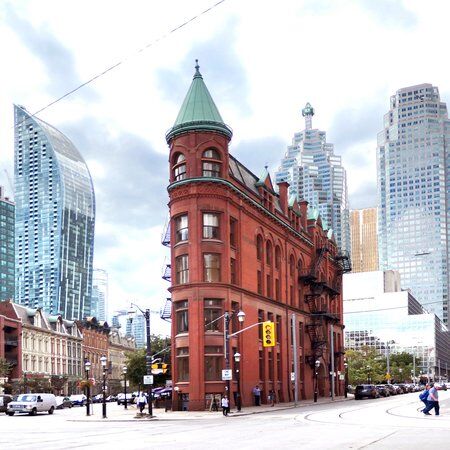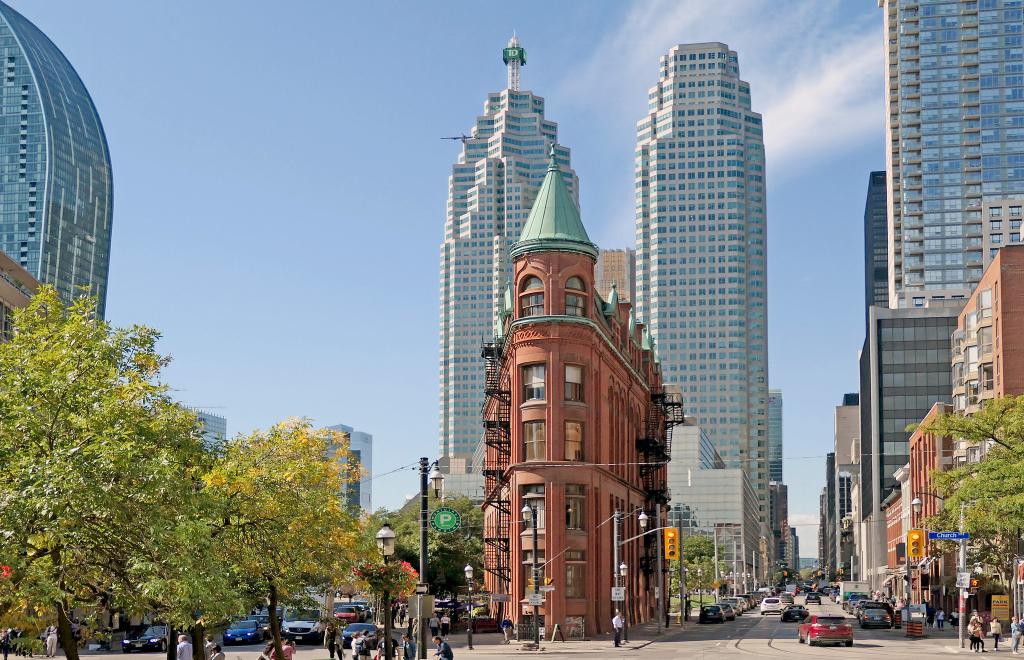Gooderham Building Address: All Details for a Smooth Trip.: Seasonal Weather and Nearby Attractions Can Enhance Your Trip.}
Gooderham Building Address: All Details for a Smooth Trip.: Seasonal Weather and Nearby Attractions Can Enhance Your Trip.}
Blog Article
Reveal the Rich History Behind the Gooderham Structure in Toronto
The Gooderham Structure, an excellent manifestation of Richardsonian Romanesque design in Toronto, has a fabled past that prolongs past its striking red block façade. Commissioned by the prominent Gooderham and Worts distillery in 1891, this structure has actually played a crucial duty in shaping the urban landscape of the St. Lawrence Market area.

Beginnings of the Gooderham Building
Creating a long-term tradition, the Gooderham Building, also recognized as the Flatiron Building, became an icon of Toronto's architectural evolution in the late 19th century. The structure's origins map back to 1891 when it was commissioned by the Gooderham and Worts distillery, among copyright's largest distilling firms. Developed by architect David Roberts Jr. Gooderham Building address., the framework was distinctively positioned at the junction of Front and Wellington Streets, benefiting from a triangular whole lot produced by the convergence of these highways
The building's building and construction used neighborhood red block and terracotta, developing an unique visual that complemented the blossoming cityscape. Originally meant to house the Gooderham and Worts workplaces, the building represented the success of the distillery, which had ended up being a substantial contributor to Toronto's economic situation. Notably, the completion of the Gooderham Structure accompanied a period of fast urbanization that identified the era.
The establishment of this building treasure not only showcased ingenious style yet also prepared for future advancements in Toronto. Today, it stands as a testimony to the city's rich history and versatility, proceeding to attract visitors and admirers from around the globe.
Architectural Relevance
The building value of the Gooderham Building extends beyond its unique flatiron form, mirroring the innovative spirit of late 19th-century style. Completed in 1892, the structure exemplifies the Richardsonian Romanesque style, characterized by its durable stonework, rounded arcs, and elaborate describing. The vibrant use of contrasting materials, particularly the warm red brick and limestone accents, enhances its visual appeal and demonstrates the craftsmanship of the era.
The building's three-story design is noteworthy for its harmonious proportions and stylish cornice, which contribute to its renowned silhouette against the Toronto skyline. The slim whole lot on which it stands postured unique obstacles, yet the engineers, in this instance, made a framework that took full advantage of the available room while keeping visual balance.
Furthermore, the Gooderham Building is a testimony to the flexibility of building design in urban environments. Its long-lasting existence in the middle of modern developments highlights the value of preserving historical style as a method of honoring a city's past. Today, it remains a precious spots, showing both the architectural fads of its time and the progressing narrative of Toronto as a lively city center.
Role in Toronto's Growth
Becoming a principal in Toronto's metropolitan landscape, the Gooderham Building added considerably to the city's development throughout the late 19th century. Constructed in 1892, this legendary towers represented not only the building ambitions of the moment but additionally the blossoming economic landscape of Toronto. The structure was initially made to act as a warehouse for the Gooderham and Worts distillery, which was among the largest distilleries in the British Realm. Its strategic place at the intersection of Front and Wellington Streets assisted in the movement of products and solutions, highlighting the location's significance in the city's business activities.
As the city expanded, the Gooderham Building ended up being an essential component of the St. Lawrence Market area, which was a center of trade and commerce. In significance, the Gooderham Building is not simply a building site; it played a crucial duty in forming Toronto's identity and economic growth throughout a transformative duration in its history.
Cultural Impact and Heritage
Gooderham Building's unique architectural style and historic value have actually left an indelible mark on Toronto's cultural landscape. As one of the city's most recognizable spots, its special flatiron shape and elaborate brickwork exemplify the Victorian building fads of the late 19th century. This structure not only serves as an aesthetic anchor in the St. Lawrence neighborhood but additionally symbolizes the spirit of an expanding city throughout an era of financial development.
The building has actually ended up being a symbol of Toronto's rich background, inspiring local musicians and digital photographers who look for to catch its charm. Its visibility has fostered a feeling of community identification, adding to the story of metropolitan development. Moreover, the Gooderham Structure has actually played a crucial role in the tourism industry, bring in site visitors excited to discover its storied past and building elegance.
In addition to its aesthetic charm, the structure encapsulates a story of strength and adaptation, as it has actually transitioned through different usages over the decades - Gooderham Building address. Therefore, the Gooderham Structure stands not only as a monolith of building importance yet also as a testimony to the evolving cultural heritage of Toronto

Reconstruction and Conservation Initiatives
Many repair and preservation efforts have been undertaken to guarantee the Gooderham Building continues to be an essential part of Toronto's building heritage. Originally finished in 1892, the structure has undergone substantial restorations to attend to structural problems while preserving its historical integrity. The most remarkable repair occurred in the late 20th century when the building was thoroughly refurbished to fulfill contemporary safety criteria without compromising its initial style components.
These initiatives included fixing the distinctive red-brick frontage, restoring the iconic triangular form, and preserving the intricate stonework details. Furthermore, the building's interior has actually seen careful updates that value its historic importance, making certain that original attributes such as wooden beam of lights and attractive moldings are maintained.
The Gooderham Structure is currently protected as an assigned heritage residential property under the Ontario Heritage Act, which aids protect it from improper alterations. Area involvement has played a see here now vital role in these preservation initiatives, with neighborhood advocacy groups increasing recognition concerning the building's historical significance. As an outcome, the Gooderham Structure stands not just as a functional space however additionally as a testimony to Toronto's abundant building background and enduring cultural legacy.
Verdict

Please visit one of our local supporters - Gamerama And The Repair Store - Best Iphone Repair Toronto
Report this page